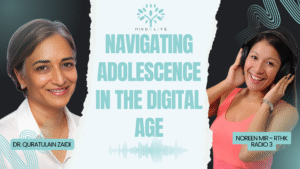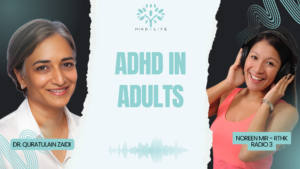The internet has made the world smaller. Now, tragic incidents that occur halfway across the globe, are easily accessible through news reports, video platforms, social media, and live streams. Increased access to information from around the world has many benefits, including giving us a deeper sense of connectedness, and a broader view of the world. However, the wildfire manner in which often graphic, violent footage spreads and is present in our daily lives, can put enormous stress on our mental health and trigger trauma responses that go unrecognized.
What Is Trauma?
Trauma is our mental, emotional, and physical reaction to deeply distressing experiences, often associated with threats to safety and survival of ourselves or people around us. This can include serious accidents, violent attacks, natural disasters, sexual assault, and death. Our brains, which continuously scan the environment for such threats, use preliminary information to rapidly activate our fight-flight system and give us the best chance of survival. Only after the activation has already begun, do higher cortical areas analyse the incoming threat in greater detail.
If the threat is real, our bodies continue to gear up for a survival response. If it was a false alarm, the brain gives the body feedback to de-activate preparation efforts. Thus, the brain uses a ‘better safe than sorry’ approach. You may have experienced the effects of this when hiking a trail and suddenly feeling your heart jump out of your chest and your foot pulling inches to the side to avoid coming down on a snake – only to recognize a few seconds later that it was just a stick. Crucially, this speedy process does not initially differentiate whether the threat we observe is in our direct environment or in a video clip.
Online Media Keeps Traumatic Events Alive
Accordingly, trauma responses can also be triggered when we are exposed to a violent event through various channels on the internet, even if it happened somewhere far away from us and we are physically completely safe. To start, this may take the form of a rapid physiological and emotional reaction to something we see online. We may feel distressed while our heart rate and breathing increase. Unlike a traumatic incident, which ends once dangers have been removed, online media keeps traumatic events alive, repeatedly exposing our brain to related material. This prolonged exposure can lead to chronic activation of our fight-flight system, and induce trauma symptoms, despite us not being directly involved in the incident. On top of this, we are often provided with emotional accounts of survivors and loved ones, witnessing their terror and pain in interviews, self-made videos, and articles. The emotive nature of such horrific first-hand narratives can evoke vicarious trauma in us, i.e. a trauma response to traumatic experiences other people went through.
Symptoms of Trauma
Symptoms of direct and vicarious trauma can be similar, including preoccupation with the traumatic event, intrusive thoughts and memories, low mood and irritability, difficulties concentrating, numbness, sleep issues and fatigue, heightened anxiety, avoidance, social withdrawal, and an increase in dysfunctional coping mechanisms (e.g. alcohol, drugs). We may find that we are more drained from energy than usual because our brain is hypervigilant of our surroundings or we are constantly trying to regulate our negative feelings.
Online Trauma Often Remains Unacknowledged
One of the biggest challenges of online-induced trauma is that it remains widely unacknowledged. We may find ourselves experiencing trauma symptoms without recognizing them or understanding their source. We may know that we are feeling down about the ‘state of the world’, but judge ourselves for being overly sensitive or decide we are not meant to be feeling this way, because nothing bad is happening to us personally. We may also experience feelings of helplessness and a sense of doom. This lack of recognition, together with the on-going omnipresence of graphic media reports, may thus perpetuate and exacerbate trauma symptoms and lead to an overall mental health decline.
Read HERE how to help protect yourself from vicarious trauma. If you have been experiencing symptoms of vicarious trauma and wish to speak to a trauma specialist, please get in touch and book your appointment.







